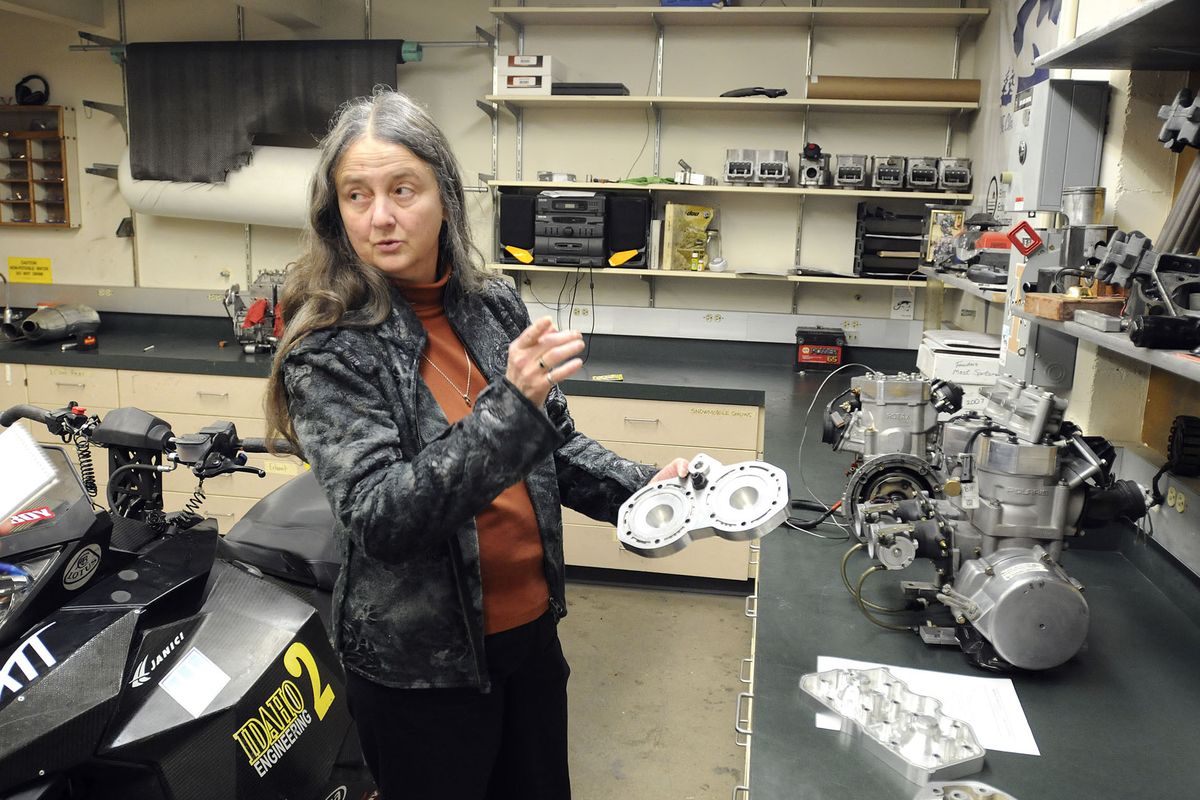UI institute focuses on transportation
Work includes traffic control, fuel efficiency, vehicle safety

MOSCOW, Idaho – The University of Idaho’s transportation institute is where research quite literally meets the road.
Since it was founded 20 years ago, the National Institute for Advanced Transportation Technology has put a premium on turning its research into real-world applications that make getting from point A to point B safe, efficient and environmentally friendly.
One example is that gray metal box that sits next to nearly every traffic light in the country. The “smart” ones developed at the institute are interlinked and computer-controlled, and they help to ease congestion.
“This is the brain,” assistant professor of transportation Ahmed Abdel-Rahim said as he cracked open one of the boxes to reveal the mass of circuitry inside. “This is what does the control. It’s more sophisticated than most people think. There’s actually a lot of smartness.”
For comparison, he opens a smaller, darker metal box, one obviously from a different era.
“This is 1940s, 1950s technology,” he said, gesturing to the dial-style timer inside. “The sad part is it’s still being used in some major cities, like New York.”
Improving on that aging technology has been a major part of the institute’s first two decades. Now it has achieved another milestone with a $3.4 million extension of a federal grant to run a Tier 1 transportation center for a second year.
As the leader of one of only 10 such centers in the country, the UI is able to orchestrate the broad expertise of a team of universities, including Old Dominion, Syracuse, Texas Southern and Virginia Tech.
“It really says something about the capabilities of the university,” institute director Karen DenBraven said of the leadership role.
Coupled with another $554,000 U.S. Department of Transportation grant to run a regional transportation center with the University of Washington, DenBraven’s team has had $8 million at its disposal over the past two years.
For years, the institute has worked to modernize things like transportation engineering, vehicle efficiency and emissions, and driver behavior. But with the renewed funding, it is moving into new territory by combining DenBraven’s quest to build cleaner, more fuel-efficient engines with Abdel-Rahim’s traffic engineering.
“We’re working at the intersection between those two fields,” DenBraven said.
When she and Abdel-Rahim first talked about deeper collaboration, DenBraven said, they figured there would be an existing body of work to draw upon. But they didn’t find much.
So they will be basically starting from scratch. One collaboration will use the data generated by student-built clean snowmobiles and hybrid Formula 1 race cars. Each year, undergraduates from across the university enter the vehicles in competitions sponsored by the Society of Automotive Engineers.
And while it is a great learning opportunity for students that helps the institute develop better engines, it also generates piles of data that Abdel-Rahim can plug into his traffic simulators.
His algorithms currently run with data based on cars with traditional internal combustion engines. They need to be updated for the proliferating new generation of hybrids, battery-powered and flex-fuel vehicles, DenBraven said.
The resulting work could have a range of effects, from helping planners and engineers build smarter roads that will fit emerging vehicle technologies, to getting information to drivers that help them make decisions that reduce emissions and travel times.
“We’re wide open to what could possibly be done here,” DenBraven said.